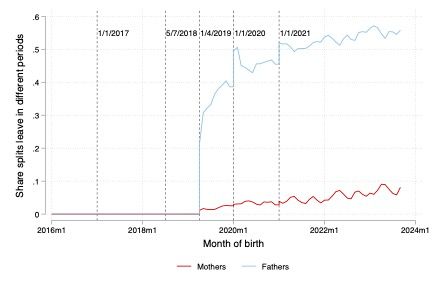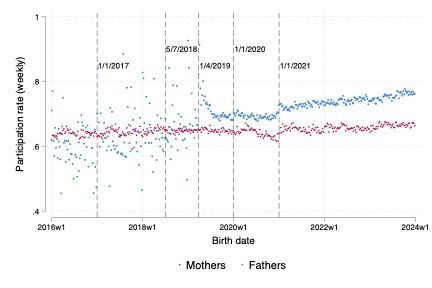This was non-existent in 2018.
Splitting likely allows fathers to be home after mothers return to work, helping delay the transition to formal childcare.

This was non-existent in 2018.
Splitting likely allows fathers to be home after mothers return to work, helping delay the transition to formal childcare.
After each extension, they immediately adjusted.
Our DiD estimates show significant jumps in leave duration after every reform — a strong behavioral response.

After each extension, they immediately adjusted.
Our DiD estimates show significant jumps in leave duration after every reform — a strong behavioral response.
As the graph shows, since 2019, when some weeks of leave became mandatory, a higher share of fathers is taking leave than mothers. Why? Because of strong eligibility gaps (mothers work < than fathers).

As the graph shows, since 2019, when some weeks of leave became mandatory, a higher share of fathers is taking leave than mothers. Why? Because of strong eligibility gaps (mothers work < than fathers).
Today, fathers get 16 weeks of paid, non-transferable leave, the same as mothers.
And this isn’t just on paper. Fathers are taking it.

Today, fathers get 16 weeks of paid, non-transferable leave, the same as mothers.
And this isn’t just on paper. Fathers are taking it.

